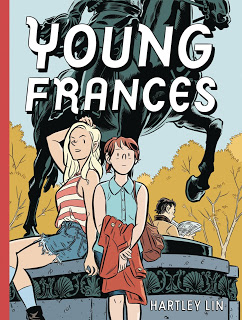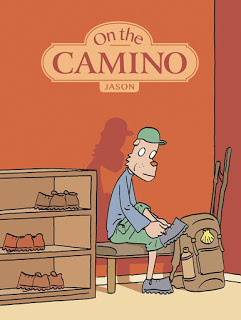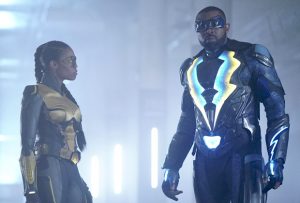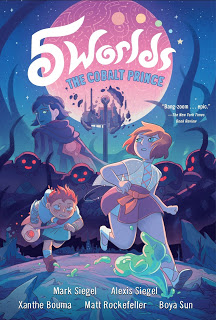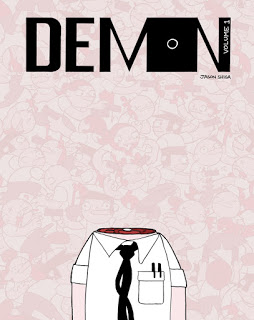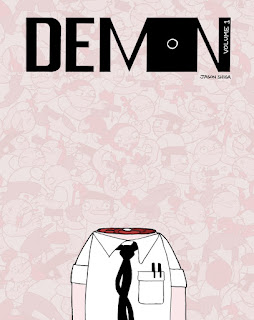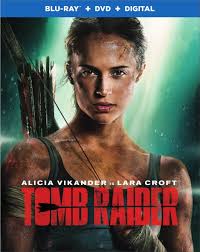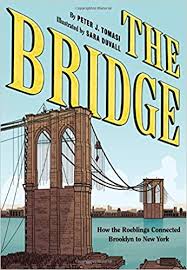Book-A-Day 2018 #182: Young Frances by Hartley Lin
I don’t want to oversell my expertise here: I’ve never worked in a law firm, and my professional work is generally marketing to attorneys within companies rather than firms. So I may be just saying that one thing I’ve never experienced personally matches another thing I’ve never experienced personally. [1]
But Hartley Lin’s Young Frances is a remarkably nuanced, detailed, smart look at the pressure cooker that is a major Big Law firm, smart about office politics and full of off-handed details about both how bruising and all-consuming it can be and about how it used to be so much worse. Ever more exciting, that’s not the point of Young Frances: that’s the world she lives in, and the work she’s doing and trying to make meaningful, but the story of this graphic novel is about her personally.
Like all of us, her work life is not her whole life — but it’s a huge piece of that life, and influences everything else. She struggles with insomnia, and worries about what she should do with her life, and has a complicated friendship with her roommate Vickie, a gorgeous actress on the verge of a huge career breakthrough. In lesser hands, Young Frances would be a “quarterlife crisis” book — yet another story about someone young and aimless.
But Frances Scarland is not aimless. She just doesn’t have much confidence in her aim, and wonders if the life she’s building for herself is worth what it costs. We all wonder that, at least now and then, and I think most of us are not as confident as we look, either. She’s a hard worker, focused on details, and cares about what she’s doing — and she’s also embedded in an organization that is designed to bring in large groups of young, hard-working people every single year, run them ragged, and then spit out most of them within three to five years. A big law firm is a brutal place to work, even if you’re not an attorney — maybe even more so, since shit proverbially flows downhill. Frances is support staff, a law clerk: she’s very far downhill.
But firm politics also lead to alliances and schemes and favoritism. At the beginning of this book, Frances is given the kind of thing that can pass for promotion in an organization like that: asked to support another practice group and given more work as others are let go. So she’s soon working mostly for the chilly rainmaker Marcel Castonguay, head of Bankruptcies — and he seems to favor her, to want to further her career.
But the core of Young Frances is that question: is this her career? Is this really what she wants to do, or is it just what she happens to be doing now? How does it affect the rest of her life? And does any of that matter?
Her roommate Vickie pulls her in other directions — sometimes frivolous, work-shirking ones, sometimes scarily major, change-your-life-entirely ones. Frances Scarland needs to decide who she is and what she will do. Like all of us do. And, like all of us, it’s not a one-time decision: every day is another choice, another step in one direction or another.
Lin tells this story in quiet comics panels, three tiers to the large pages and a precise semi-ligne claire style. This is a book full of words — these are lawyers and their support staff, with a subset of actors! — but his open pages and crisp lettering makes it all flow smoothly and evenly throughout.
Young Frances is simply astonishing as someone’s first book: Hartley Lin has arrived, fully-formed, as a mature artist with a strong story to tell and a deft hand at handling characters. We’re only halfway through 2018, but this will be really hard to beat as the debut of the year.
[1] ObligatoryReference: “So, what you’re telling me, Percy, is that something you have never seen is slightly less blue than something else you have never seen.”
![]()
![]()
Reposted from The Antick Musings of G.B.H. Hornswoggler, Gent.

